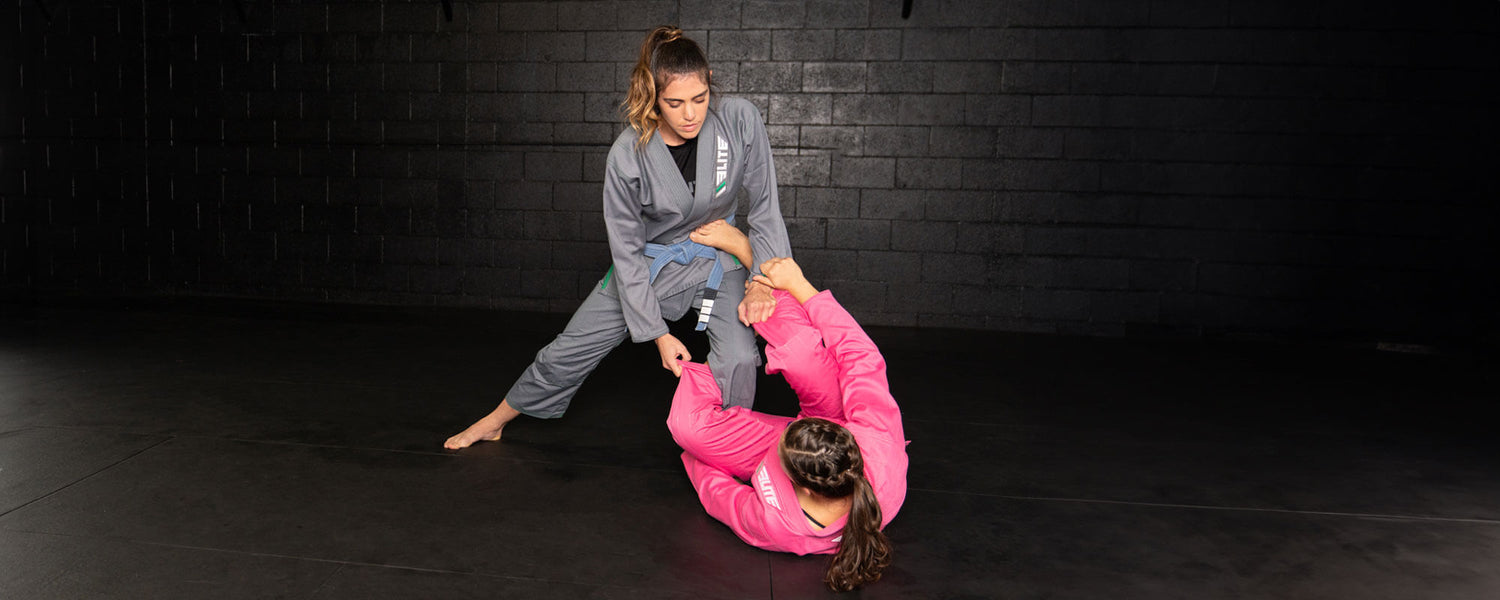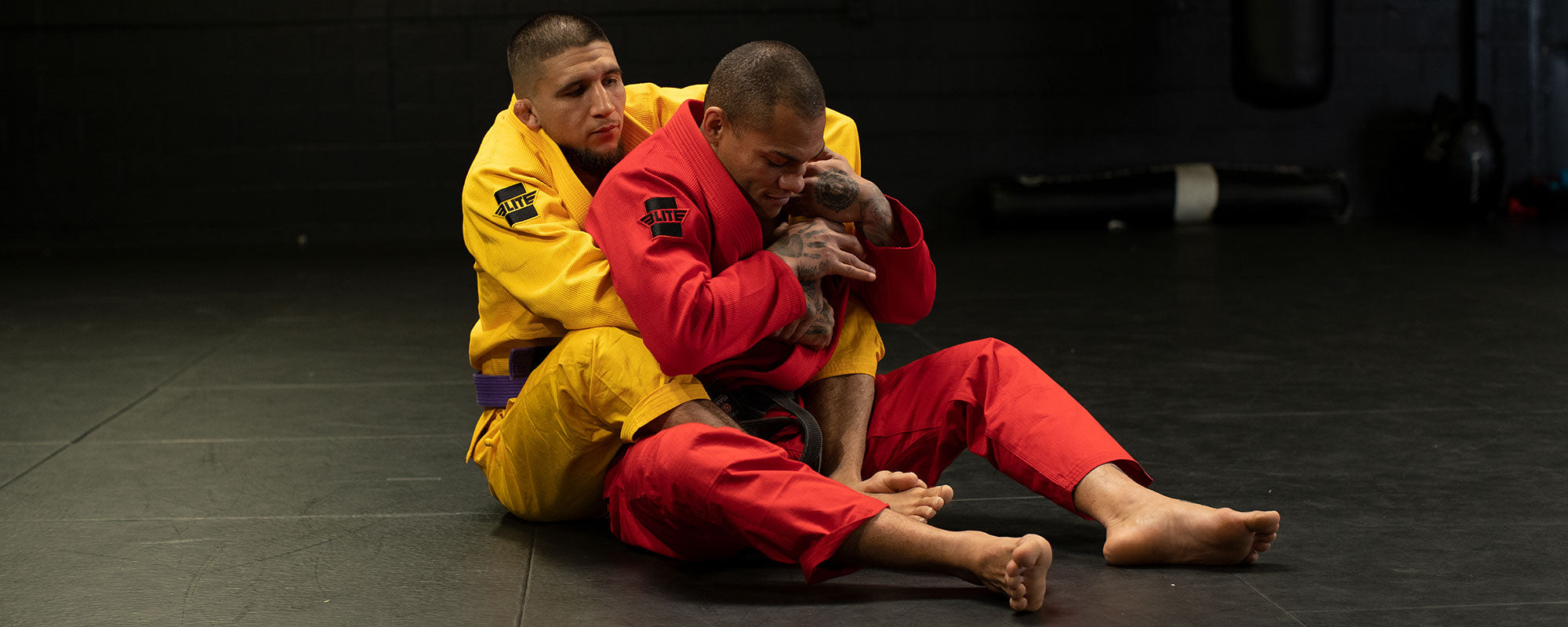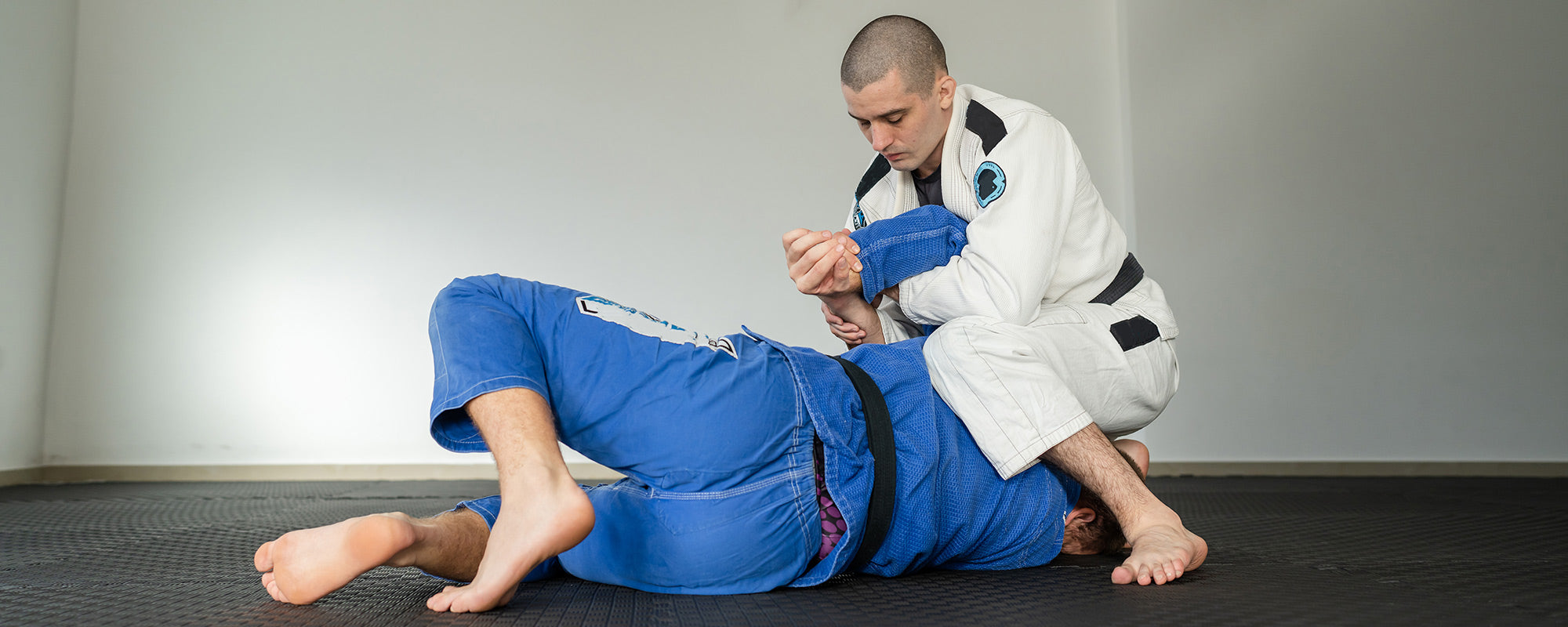The art of Brazilian jiu-jitsu consists of working on the dynamics of hooks, joint locks, and entanglements. The grappler applies submission methods, which could be arm locks or leg locks. The leg and submission techniques are applied in defensive and offensive positions.
For the application of any submission, it requires the accurate placement of the angle with the correct body position. Toe hold is the leg lock, which is also considered one of the most effective methods. It is executed by targeting the leg with the hold of the four-finger grip on the foot.
Toe hold seems to be very simple, but it is regarded as a dangerous submission technique that can cause severe damage to the foot. The leverage is maintained on the foot, which creates torque in the knee area, which can cause a great deal of damage to the leg. In this article, we are going to talk about the origin of the toe hold and how the toe hold BJJ submission works.
Table of content
1. What is the BJJ Toe Hold?
In the toe hold submission, the fighter targets the opponent's leg. After isolating one of the legs, the fighter is required to grip the leg with the leg hook. When the leg comes in the proper place, the foot is entangled in the strangle of the hand. The martial art of BJJ works on maintaining the proper angle after the hold. In the same way, the angles are created, and the targeted leg is moved after taking control of the foot.
The loop is created over the shin, and the foot is kept near the torso, restricting its movement. The hand takes the grip of the forefoot; this move is similar to the kimura lock applied to the arm.
The hand has trapped the foot with the four-finger lock, which involves the hyperextended motion of the foot with a sudden twist. This creates intense pain in the leg and can even damage the bones of the toe and the knee.
The toe hold is a type of submission involving the foot or ankle, and it is one of the possible submissions that every BJJ student should include in practice. It is available from numerous positions, such as the top and bottom half guard, and can prove to be helpful when attempting to surprise your opponent.

Nevertheless, it is well known that the toe hold can be dangerous if one does not know how to perform it correctly. Hence, caution and care should be taken when learning about these submissions.
The toe hold is usually where you find yourself after putting in an ankle lock, which is quite a simpler submission. Primarily, a toe hold is applied if you are at an apparent angle concerning the opponent's leg foot. This means you can link these two submission attempts when the user squirms in order to escape.
On the contrary, you can also use the kneebar with the toe hold. So, basically, try to combine these strikes as you feel it will be much easier to proceed to the succeeding attack.
2. Origin of the Toe Hold in BJJ
While the 1970s were on the current, the teaching of the leg locks was started. Rolls, Gracie, was an important figure who was a pioneer in the publicizing of leg locks in BJJ. The very idea was set against by the owners of the Gracie family, who maintained that using locks for the legs.
It was not compatible with high morality but it later became the reason that caused the giants of their time to have the right vision as required was this approach coming from Rolls Gracie who was less dogmatic regarding this issue.
In Brazilian Jiu-Jitsu (BJJ), the toe hold is an old submission move, which represents BJJ as a martial art that originated a long time ago. The toe hold was prevalent in judo; it is a joint move created from a variety of attacking positions and entangled leg dislocations.
The toe hold involves gripping the opponent's ankle and foot with a four-finger grip, and the subsequent rotative movement causes an extremely bad injury if not properly avoided. As a result, this multitalented strategy is applied in different positions, leading to its extensive use in both gi and no-gi training.
3. How does BJJ Toe Hold Work?
The toe hold is a leg strangle that works on the proper placement of the angles. The fighter grabs the muscles of the leg that entangle the joints of the ankle, knee along with toe of the foot.
The fighter grabs the leg by twisting the leg joints. The use of the four-finger grip creates a significant difference. The foremost part of the foot faces the fighter, and the sole is moved to the outer side with the twist.
Pressure is exerted on the relatively smaller joint of the foot, which is the toe bone. The sudden twist creates a jerk and torque in the three main joints of the leg. After applying pressure to the foot, leverage is applied. The stretch in the ligaments disrupts the natural balance of the leg. The external force is applied in a comparatively controlled manner that makes the opponent tap out.
Note that a little uncontrolled pressure can lead to the breakage of the bone, possibly any of the three knee, ankle, or foot bones.
4. Setting Up a Toe Hold BJJ

Toe hold is the fundamental submission and the leg lock in Brazilian jiu-jitsu. It is the submission method that is part of the BJJ Gi and No Gi bouts. The foot lock is the ultimate strangle with the highest percentage.
Toe hold is a massive technique that can be applied from multiple positions that work on the exact placement of the angles, let us find out the correct application of the toe hold.
4.1. Take the Position
Toe hold is a versatile move that can be applied from the various positions that are:
Half Guard
Mount
Ashi garami
Side mount
Bottom guard
Omoplata
The fighter can execute the toe hold from any of the positions, the most commonly used position is the ashi garami, and the fighter can also use any of the variations of the ashi garami. The point is to use the correct angle to target the leg of the fellow fighter.
4.2. Isolate the Leg
The important step is to grab one of the opponent's legs; the focus is on grabbing the opponent's foot. The fighter can take control of the leg after moving the side of the torso to the targeted leg of the opponent.
4.3. Placement of the Leg
Keep the targeted leg over the same side of the arm as the opponent is in front of the fighter. Suppose you are targeting the right leg. Keep it under the right hand and place the arm over the side to stop the leg from escaping.
4.4. Slide to one Side
Keep one leg over the ribs of the same side, that is, the right side, and apply pressure on the foot to let the opponent fall towards one side of the mat. In the meantime, keep the foot in the same position and slide towards the opposite side of the opponent.
4.5. Grip of the Hands
One of the hands is placed over the foremost part of the foot, and the other hand is kept on the knee area to restrict the movement of the leg.
4.6. Place Underhook
Turn the side of the leg towards the outer position and use the inside hand to create the under hook over the shin area.
4.7. Four Fingure Lock
The arm with which you have created an underhook, place it over the wrist of the other hand. Use the four-finger grip to lock the motion of the leg.
4.8. Finish the Submission
Use the tight grip, hold the toe, and apply the pressure over it until the oppoent submits for the tap.
Note that the fighter needs to apply pressure over the toe, with the maintained amount of pressure over the toe. If the pressure is applied more than the required limit, then it might lead to the breakage of the bone.
5. Variations of the Toe Hold Jiu-Jitsu
Toe hold is a versatile move that can be applied from a number of different positions. It increases the opportunity for the fighters, as they have the chance to use the bjj toe hold to distinguish themselves from the others.
5.1. BJJ Toe Hold from the North-South
The guards provide better opportunities for the BJJ fighter, they can get to the direction of the foot as they get into the north-south position. As the faces of the fighters are in the extreme opposite direction it creates the maximum advantage to grab the leg for the submission.
5.2. Reverse Toe Hold
Inverted toe hold is the most basic position that is used in various competitions of BJJ and MMA. It involves the instant grip of the leg with the entanglement of the hands. The sudden pull of the legs puts the opponent down to the ground, where his face is directed to the mat. At that point, the fighter can immediately get a grip over the foot to trap the opponent in a toe hold.
5.3. Inside Toe Hold
In this variation of the toe hold, the BJJ fighter starts the execution from the ashi garami position. The fighter takes control of the targeted leg with the inside area of the leg. Moreover, it involves the application of the force over the ankle and toe joint that leads the pressure over the knee.
5.4. Half Guard to Toe Hold
The half-guard, if the ultimate stage is with the fighter, can apply for a lot of submissions. It is the best way to take control of the leg for the leg locks. From the half guard, the grappler can easily threaten the opponent with the toe hold.
6. Frequently Asked Questions (FAQs)
6.1. Why is a toe hold considered a versatile move?
What makes the toe hold such an effective submission is that it is not only the technique that can be used as a last move at the end of the fight. However, it can also be used to set up finishing progression or advance to leg attacks.
To finish effectively, this one also needs to aim the leg, such as ashi garami. You can use the toe hold from positions like the top half guard. People probably consider that one has to get a tremendous amount of space in order to hold one’s toe, while one needs to grab the tip of the foot. With a toe hold, one can submit the opponent.
6.2. What are the tips for the toe hold submission?
In 2014, a significant shift occurred in the martial arts community as many practitioners began to focus on developing leg games. This strategic shift proved to be highly effective. As leg-locking techniques often start from a bottom position, a deep understanding of guards and leg and body entanglements is crucial.
As the saying goes in martial arts, “Position before submission.” This understanding is particularly important in leg locks , where the stakes are just as high, if not higher.
Leg attacks have been used in many martial arts. Moreover, it provides the highest percentage.
when a BJJ practitioner starts to practice it with different positions, after a few months of serious training, they will see a significant difference in their game.

6.3. Are toe holds considered illegal in BJJ tournaments?
Toe hold is the legal submission method in Brazilian jiu-jitsu, although it requires special care while applying the toe hold. It needs extensive practice to entangle the ankle, toe and knee in the strangle.
However, it has been recommended that you familiarize yourself with the rules and regulations of the tournaments in which you are going to practice. The fighter can also discuss this with the related guide or the instructor before applying the leg lock.
7. Final Words
The toe hold is one of the techniques to create a fully oriented leg lock. It is a functional option that can be used in many illustrations. BJJ fighters, even at world-class competitions like the ADCC, have been known to put on tremendous pressure under the hooks of a toe hold.
The fundamentals of these techniques are relatively easy, but there are many setups, tactics, and game plans for toe hold. The fighter is required to do the intense practice of the toe hold to submit the opponent. If you want to build a core game, it is better to work on the leg locks based on the techniques.
So, it aims to focus on using those attacks so that their skills with regard to the subtleties are very sharp. As any leg-based attack in combat sports is designed not only to submit your opponent but to take a step up your game to another level, such submission holds as a toe hold are also advisable to learn.












Leave a comment
This site is protected by hCaptcha and the hCaptcha Privacy Policy and Terms of Service apply.